Want to supercharge your health and total cost of care strategy? Medicare Accountable Care Organizations can now access CMS shadow bundle data.
This is a unique opportunity for ACOs and clinically integrated networks to reap benefits without assuming any additional financial risk. These benefits include:
improving care delivery;
managing episodes of care within their population; and
promoting engagement with specialists as partners.
If you're ready to do more with your data, continue reading for a complete shadow bundle data overview. We'll examine the four main benefits and discuss how they can help supercharge your analyses.
4 Main shadow bundle benefits
Before we dig in, here’s a brief outline of shadow bundles. Also, use our shadow bundles opportunity analysis info sheet for a quick overview.
What? Shadow bundles capture episodes of care within a defined patient population. CMS’ shadow bundle data for ACOs mirrors the specifications of the Bundled Payments for Care Improvement Advanced model. This is for the ACO’s attributed beneficiary population.
Who? CMS ACO participants. This includes those under the Medicare Shared Savings Program and Realizing Equity, Access and Community Health. However, organizations not in an ACO can consider other sources of data to similarly analyze shadow bundles.
When? In February 2024, CMS provided the first set of monthly shadow bundle data to MSSP and REACH ACOs.
Where and how? CMS will post monthly shadow bundle data files to the 4i and ACO-MS portals.
Benefit 1: A new tool for total cost of care
Over the past decade, many providers have struggled to participate in Medicare Alternative Payment Models, let alone multiple models with sometimes conflicting incentives. Since 2010, the CMS Innovation Center has launched more than 50 models.
In 10+ years, only six of the 50 models have generated statistically significant savings, as reported by CMS' 2021 Innovation Center Strategy Refresh. CMMI now aims to produce fewer, more parsimonious models.
When done right, population- and episode-based models can complement each other, according to CMS' Request for Information; Episode-Based Payment Model. This prevents unnecessary care and controls the cost of acute, high-cost episodes. Expanded data access will allow ACOs to analyze their population’s episodes. This better aligns these value-based care strategies.
Benefit 2: Refined analysis of utilization, Medicare spend and performance
Providers can use shadow bundle data to analyze healthcare service use and quality by procedure or disease-specific episode. Shadow bundles add a unit of analysis that identifies:
utilization across the care continuum 90 days post-discharge;
Medicare episode spend compared to benchmarks;
potential cost savings if unexpected care is minimized; and
quality improvement opportunities through standardized care and practice transformation.
Shadow bundle analysis may reap rewards for ACOs: quick wins in high-cost care management.
Benefit 3: Bundled payment data without bundled payment rules
Shadow bundles for Medicare ACOs match those defined in the BPCIA Model: 34 Clinical Episode Categories in eight Clinical Episode Service Line Groups. We describe these categories and CELSG further in our blog, BPCIA: 4 fast facts for a successful Model Year 7 kickoff.
MSSP and ACO REACH providers can use shadow bundles to manage acute episodes of care and pinpoint high-cost care patterns in their attributed ACO population. This is without the added requirements or risks associated with participation in a formal episode-based, value-based payment contract.
Benefit 4: Stronger specialist engagement
Shadow bundles address care referral and coordination between primary care providers and specialty care providers. PCPs can use shadow bundle data to identify which specialists their patients see. For example, if they are in-network, highly rated and/or deliver cost-effective care.
CMS’ use of shadow bundles aligns with its Innovation Center Specialty Care Strategy focus and its Strategy Refresh. This alignment can amplify PCP-SCP Medicare savings and incentives while increasing data transparency across the care continuum.
Zero in with zero extra lift
With DataGen shadow bundle analysis capabilities and subject matter expertise, you get more data plus expert resources to ease your burden and supercharge your analysis. We can provide shadow bundle data and analytics for any provider who wants to assess their APM readiness, tame total cost of care or transform their practice.
DataGen has 12+ years of experience programmatically constructing episodes of care, visualizing cost drivers and educating providers so they better understand their risks and opportunities when considering participation in value-based payment arrangements.
Contact DataGen today for a free demo of our new shadow bundle analysis platform.


Comments
Post a Comment